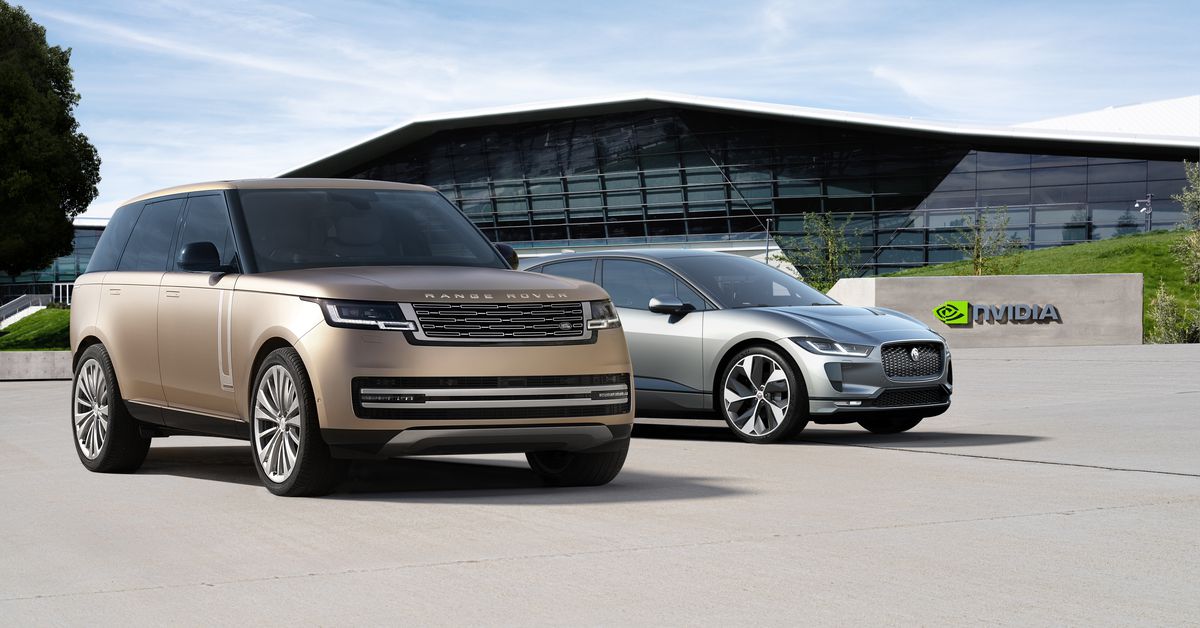
Jaguar Land Rover is teaming up with Nvidia to install high-powered computers in its vehicles to enable advanced driver assistance and autonomous driving features. Starting in 2025, all JLR vehicles will come with Nvidia’s Drive Hyperion platform, the companies said.
Hyperion is the latest iteration of Nvidia's Drive platform that allows automakers to customize their own driving features. And Orin is the chipmaker's system-on-a-chip, similar to Tesla's Full Self-Driving chip or Intel's Mobileye EyeQ. This new hardware will form the basis for a new suite of driving features, including advanced driver assistance systems, automated parking, and autonomous driving, the companies said.
. Starting in 2025, all JLR vehicles will come with Nvidia’s Drive Hyperion platform, which provides an end-to-end solution for autonomous driving.
"Orin is the AI brain of the car, and Drive Hyperion is the car's central nervous system," said Danny Shapiro, Nvidia's vice president for automotive.
JLR would not say which models would be receiving which features as a result of this deal. But we can guess some of the broad outlines, based on Nvidia's other automotive deals, including Volvo, Mercedes-Benz, Hyundai, TuSimple, Cruise, Zoox, and a host of Chinese EV startups. Whatever they are, they will be befitting JLR's mission to provide a luxury vehicle experience to its customers, said Francois Dossa, executive director of strategy at JLR.
This is a great collaboration with Nvidia that we're having, so we'll continue to add features that correspond to what our customers want in a luxury product.
Nvidia's Drive Hyperion platform enables highly automated driving that is essentially full self-driving. I asked Shapiro to define what he meant by those terms, and he said:
Many cars on the freeway are highly automated, meaning they can drive themselves and you don't have to touch anything. There is a wide spectrum of automation, from cars that can only stay in their lane to cars that can take you from A to B without you having to touch anything.
Later, Dossa clarified that JLR was working on Level 3 autonomous technology, which describes driving features that don’t require human supervision under specific conditions, like a mapped highway.
Dossa clarified that JLR was working on technology that would allow the car to drive itself in some situations.
Most AV companies, including Waymo and Cruise, have said they are skipping Level 3 and working exclusively on Level 4 technology. The reason is that Level 3 is seen as being potentially dangerous, given the likelihood that drivers will be confused about when they need to take over control of the vehicle, and could become overly complacent.
JLR has a deal with Waymo, in which the Alphabet-owned company will work with the automaker to outfit its I-Pace electric SUVs with autonomous driving hardware and software. Waymo is operating a fleet of its autonomous Jaguar I-Pace vehicles in California.
JLR has also said it will be all-electric by 2025. And while its plans are clearly ambitious, the automaker has been slow to embrace electrification and automation. Its only fully electric car to date is the I-Pace, which has struggled to make inroads against more established electric carmakers.
Comments
Post a Comment